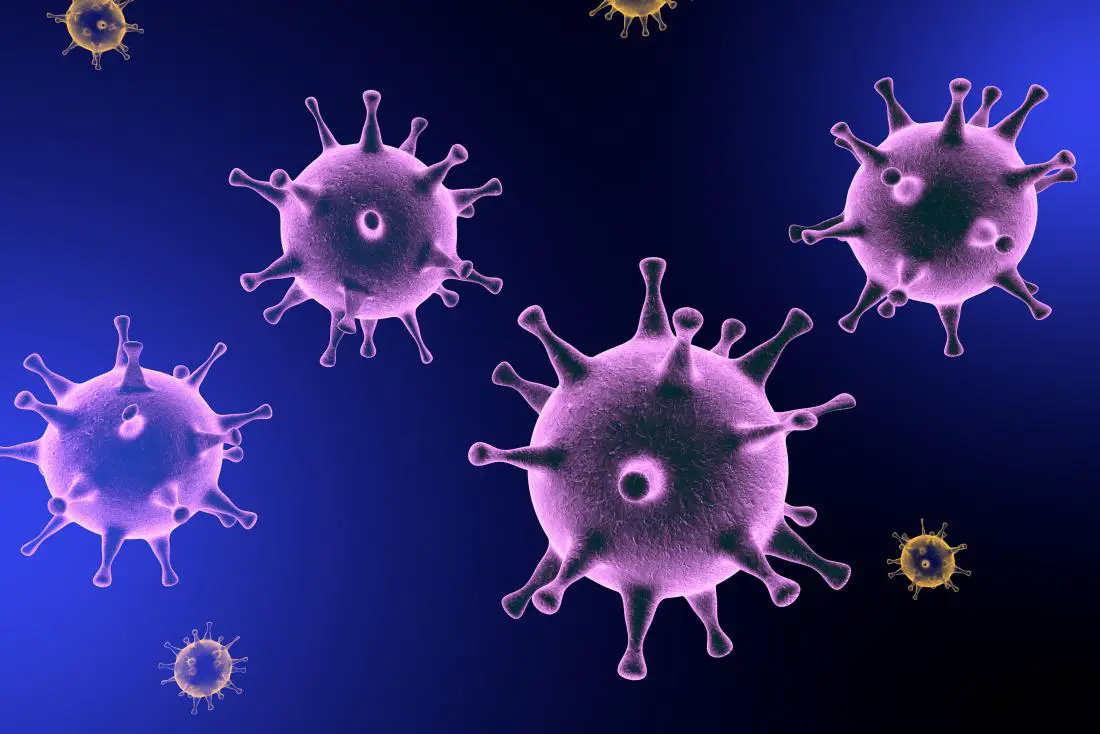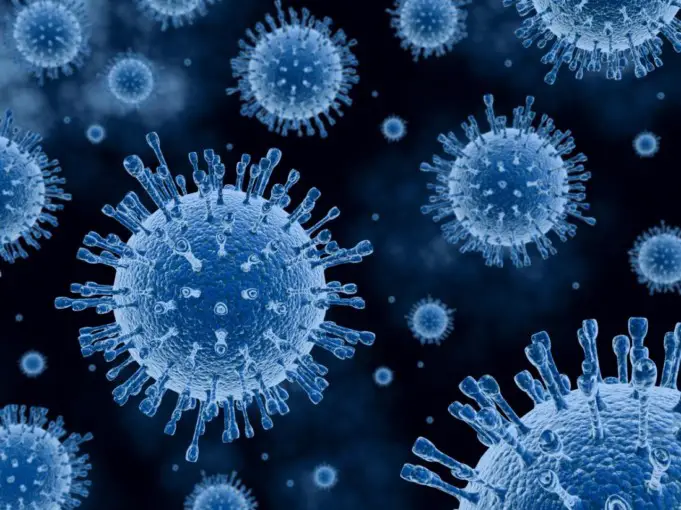They have probably infected you at some point in your life. They are tiny living organisms with wide-reaching effects. They are responsible for diseases as minor as the common cold or sore throat to life-threatening conditions like HIV/AIDS. They are viruses.
A virus is a microscopic biological agent that can only reproduce inside the cells of a living host. Once infected, the virus forces the host cell to produce thousands of identical copies of it.
Most viruses contain DNA or RNA as their genetic material. However, unlike most living things, viruses are not capable of dividing to produce daughter cells. They instead direct cell machinery to assemble new viral particles within the cell.
Nucleic acid (DNA or RNA) may have a single strand or be double-stranded. The infectious viral particle is called a virion, and it consists of the nucleic acid and an outer shell made of protein.
There are over 5,000 species of viruses and they spread in a number of ways and infect specific host species, depending on the species of the virus. For example, viruses that attack plants spread to other plants via insects and other living organisms known as vectors.
Certain animal and human viruses are spread through infected bodily fluids. Some such as influenza are transmitted from exposure to moisture from the coughing or sneezing of an infected person.
Others like gastroenteritis caused by the norovirus are spread through the fecal-oral route, which could occur with you shake hands with an infected person who did not wash their hands after using the bathroom. Other viral diseases like HIV are transmitted by the exchange of infected body fluids during sex.
Viruses cause a plethora of diseases in plants, animals, and humans, and they have no cure. However, some of them are usually eliminated by the immune system, giving lifelong immunity to the host for that particular virus.
History of Virus
After French microbiologist Charles Chamberland invented the Chamberland Filter used to detect particles smaller than bacteria in 1884, Dmitri Ivanovsky, a Russian biologist, used this filter to study crushed tobacco leaves that stilled remained infected by agents smaller than bacteria after being passed through the filter. This is what is now known as the tobacco mosaic virus.
Around this period, other scientists were able to prove that although these microscopic agents differ from bacteria, they are still able to cause diseases.
They named these agents viruses. The first image of these viruses came about when the electron microscope was invented in 1931 by Ernst Ruska and Max Knoll.
Origin of Virus
Although viruses may have existed since before life on earth, the origins of this microorganism remain vague. Many scientists have postulated that viruses may have once been tiny parasitic cells that preyed on larger cells.
These parasitic cells lost the genes not required by their parasitism over time. This is known as Regressive hypothesis.
Another popular hypothesis that seeks to explain the origin of the virus is the cellular origin theory. This states that some viruses may have evolved from bits of RNA or DNA that escaped from the genes of larger organisms. These bits of escaped nucleic acid may have come from plasmids or evolved from bacteria.
The co-evolution theory proposes that viruses may have evolved from molecules of nucleic acid and protein around the same time cells first began to appear on earth, making the viral particles dependent on cellular life for billions of years.
Structure of Virus

A virus typically consists of a protein layer of protein known as a capsid. These capsids occur in different shapes and sizes, from helical forms to complex structures with tails.
The protein coat protects the genetic material inside the virus from the external environment. It is also responsible for the recognition of possible host organisms, enabling the virus to bind to host and cells that are susceptible.
The capsid is sometimes contained within a phospholipid envelope made from the infected host cells. A major example of a virus that exhibits this characteristic is the influenza A virus, which has the glycoproteins hemagglutinin and neuraminidase on its surface.
The largest and most complicated viruses can be seen using a high-resolution light microscope. Viruses exist in different shapes, with the major ones being rods and spheres.
Rods have their nucleic protein units arranged in a linearly while spheres are icosahedral polygons. Many plant viruses and bacteriophages (bacterial viruses) are small filaments or polygons
The nucleic acid (DNA or RNA) encodes the genetic information and is unique for each virus. When outside the cell, the virus is rendered infective. This form is known as a virion.
Viriods are virus-like organisms that cause diseases. They possess only nucleic acid and have no protein coat.
How do Viruses work?
Since viruses do not possess the necessary mechanisms needed to exist independently, they seek out other living host cells and use these cells to replicate. The following are ways by which viruses infect their host:
- Direct contact transmission: This refers to viral transmission through physical contact between an infected and uninfected person via kissing, biting, or sexual intercourse. Examples of this are HIV and Ebola virus.
- Indirect transmission: This is the transmission of virus via contact with contaminated objects or materials such as medical equipment like needles and blades or shared eating utensils. A given example is HIV
- Airborne transmission: This is the respiratory infection that occurs when the virus in air droplets is inhaled e.g., Influenza A
- Common vehicle transmission: This mode of transmission refers to when individuals pick up the virus from food and water contaminated with fecal matter. This often causes an epidemic.
Once inside the host, they bind themselves to the host and begin to move across the membrane of the host cell.
Once inside, they release their genomes and hijack the cell’s machinery, directing the cells to produce more viral materials. The virus creates conditions for it to replicate within the host.
The entire process, from infection to replication, is known as the lytic cycle. It could take a little of twelve hours to a couple of days.
Virus and Human Diseases
Viruses are causal agents of many diseases. These include HIV/AIDS, dengue fever, zika virus, common cold, ebola, and chickenpox. The diseases caused by viruses depend on the type of cells they infect.
Some viruses cause chronic infection where it continues to reproduce in the body despite the host’s immune system. A given example of this is the hepatitis B and hepatitis C virus.
Treatment and Prevention of Viral Diseases in Humans
Viruses can be prevented by vaccination and immunization. Vaccines simulate a natural infection of a specific virus and its associated immune response but do not cause the disease.
This has been responsible for the eradication of smallpox and a reduction in the cases of illness and death caused by diseases such as rubella, measles, polio, and mumps.
The development of antiviral drugs in response to the AIDS pandemic in the 1980s has increased rapidly. These drugs work by stopping the replication of the virus in an infected person.













